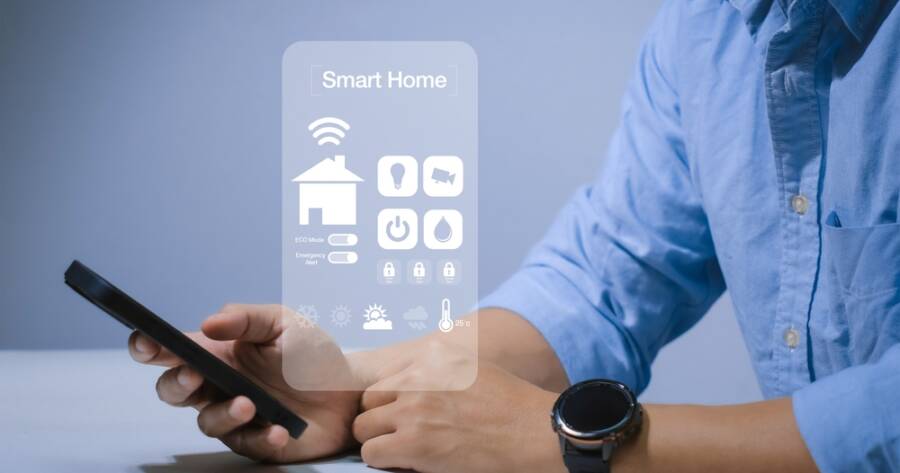Smart homes are no longer futuristic concepts — they’re part of everyday life for millions of Americans. Lights, thermostats, doorbells, speakers, and even coffee makers can now communicate with one another, forming an intelligent ecosystem that responds to your routines. Connected devices don’t just follow commands; they learn from patterns. Over time, your home begins to anticipate your needs, adjusting the temperature, playing your favorite playlist, or turning off lights before you even think to ask.
Understanding How Smart Homes “Think”
At the core of a smart home is data — information collected from sensors, voice commands, and user interactions. Every time you adjust a thermostat, lock a door, or dim a light, that input becomes part of a pattern. Devices use built-in algorithms to recognize these patterns and make small adjustments automatically.
For example, a connected thermostat can learn when you typically leave for work and when you return, adjusting the temperature accordingly to save energy without sacrificing comfort. Smart lighting systems might detect that you prefer softer light in the evening or brighter tones in the morning. Over time, these observations build a personalized environment tailored to your habits.
This learning process doesn’t mean the devices “know” you in a personal sense. Instead, they rely on repeated actions and timing cues, refining performance through repetition. The longer you use them, the better they understand what feels normal for your household.
The Role of Integration and Communication
A truly “smart” home isn’t about having a collection of gadgets — it’s about how they work together. Interconnectivity is what turns individual devices into a cohesive system. Using shared standards like Wi-Fi, Bluetooth, or newer technologies such as Matter and Thread, devices can communicate across different brands and platforms.
This integration allows for automation that feels seamless. When you unlock your smart door, your living room lights can automatically turn on and your speaker can start playing music. When you leave the house, the system might detect no motion for a period and switch everything off. These small conveniences add up to a sense of flow and comfort that traditional setups can’t provide.
Central hubs or voice assistants often act as the “brains” of this operation, coordinating data between devices. For example, when you tell a voice assistant to start “movie mode,” your TV, lights, and sound system respond together. The more these systems communicate, the more capable they become of predicting and automating complex routines.
Learning Through Use: Patterns and Predictions
What makes smart homes feel intuitive is their ability to recognize patterns and make predictions. Motion sensors can detect when rooms are occupied. Smart plugs can log when certain appliances are used most often. Over time, this data shapes how the home behaves.
If your home notices that lights in the hallway are always turned on around 10 p.m., it may start activating them automatically at that time. Similarly, a smart sprinkler system can adjust watering schedules based on past use and current weather forecasts. These small, data-driven adjustments create an environment that evolves naturally with your habits.
However, automation doesn’t mean loss of control. Users can always override or fine-tune these behaviors. Most platforms allow you to edit routines manually, set time limits, or disable learning features entirely. The goal is convenience, not dependence — allowing the technology to adapt to you, rather than the other way around.
Privacy and Transparency in a Connected Home
The convenience of learning systems raises an important question: how much data do they collect, and where does it go? Most major smart home manufacturers offer clear privacy settings that let users decide what information is stored locally and what is shared with cloud services.
For example, some systems store data directly on the device rather than sending it to external servers. This local processing allows learning to occur privately, within your home network. Users can typically access privacy dashboards that show what data is being collected and delete it if desired.
Transparency is key. As consumers become more aware of data security, companies have started providing clearer options for consent and data management. It’s always worth reviewing privacy settings regularly to make sure your devices align with your comfort level.
The Balance of Comfort and Control
Smart homes are built around one goal: to make daily life smoother. They eliminate small chores, save energy, and personalize comfort. But the real power of interconnected devices lies in how they adapt without constant supervision.
When the system works as intended, you don’t have to think about managing it. The lights fade when you relax, the temperature adjusts while you sleep, and the music starts as you walk in the door. These micro-adjustments, informed by simple data patterns, create an environment that feels intuitive and alive — not robotic.
The Future Is Subtle
The future of smart living isn’t about flashy technology — it’s about quiet intelligence that fades into the background. The best smart homes don’t draw attention to themselves; they respond naturally, learning how you live and shaping your surroundings in simple, useful ways.
As interconnected systems continue to evolve, the modern home is becoming more than a shelter — it’s a partner in daily life. By learning habits and anticipating needs, it transforms from a static space into a dynamic environment, proving that technology’s smartest trick is knowing when to stay out of the way.

